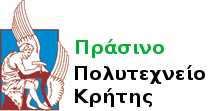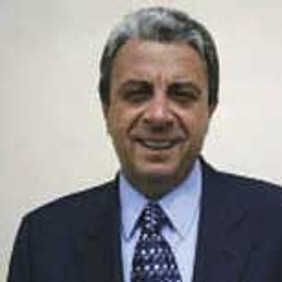Την Τρίτη 5 Ιουνίου και Πέμπτη 7 Ιουνίου και ώρα 14:00-15:00 θα δοθούν δύο διαλέξεις από τον Prof. Giuseppe Bonifazi, Department of Chemical Engineering Materials and Environment, La Sapienza - University of Rome.
Ημερομηνία: Τρίτη 5/6/2018 | Ώρα: 2:00 μ.μ. | Αίθουσα: Α1 του κτιρίου Κ2
LECTURE NO. 1: IMAGING TECHNIQUES APPLIED TO PARTICLES AND PARTICLES SYSTEMS CHARACTERIZATION: PAST, ACTUAL AND FUTURE TRENDS
In this lecture are described and critically evaluated some of imaging techniques currently applied to particle and particles systems characterization both at laboratory and processing plant scale. The evolution of hardware and software architectures specifically developed and implemented for particles and particles systems characterization, as well as utilized logics, procedures and algorithms are also discussed and evaluated, also making a comparison among the different approaches in respect of the “quality” of the results. A review of the major Electronic Imaging (EI) particles and particles systems (i.e. natural, synthetic and derived products as well as secondary raw materials derived) applications is presented. The evolution of analytical logics and operative tools addressed to perform morphological and morphometrical based characterization of closed domains (i.e. single particles, clusters, aggregates) and/or bulk products textural attributes will be presented. More specifically, will be analyzed; i) the most recent techniques and approaches finalized to realize a full morphological and morphometrical characterization of the domains of interest detectable in the image representative of a system of particles, clusters, aggregates, ii) the best strategies to develop and set-up “intelligent procedures” to detect and handle complex particulate solids systems, that is systems of particles not easy to define in terms of composition, as well as morphological and morphometrical attributes, iii) advantages and disadvantages in adopting different morphological domain characterization approaches, as those based on classical morphology, mathematical morphology, digital morphology, signal based morphology, etc. and, finally, iv) the actually available, or customizable, hardware and software architecture to successfully perform a successful particle and particles systems characterization based on imaging techniques.
Ημερομηνία: Πέμπτη 7/6/2018 | Ώρα: 2:00 μ.μ. | Αίθουσα: I2 του κτιρίου Κ2
LECTURE NO. 2: QUALITY CONTROL BY HYPERSPECTRAL IMAGING (HSI) APPLIED TO SOLID WASTE CHARACTERIZATION AND RECYCLING: FUNDAMENTALS
A fast, reliable and low cost characterization of solid waste products as fed to a recycling process, and/or resulting from different processing actions, represents one of the most challenging targets in the recycling sector. Today, thanks to the strong technological development, different techniques are available according to different sampling strategies and analytical principles to detect specific physical-chemical attributes of solid waste particles, representing the key factor to perform a full process monitoring and/or to apply specific control/tuning actions on the process itself. The attributes can be determined off-line (e.g. sample collection and laboratory scale analyses) or on-line (e.g. direct collection from the particle flow stream of the information of interest). In this lecture the principles and the possibilities offered by the adoption of specialized devices allowing to develop on-line acquisition/processing strategies, based on HyperSpectral Imaging (HSI) and finalised to perform solid waste streams characterization, inspection and quality control actions, are presented and discussed.
Short CV of Prof. G. Bonifazi
Giuseppe Bonifazi is full professor of raw materials beneficiation at the Department of Chemical Engineering Materials and Environment at La Sapienza - University of Rome. He has more than 25 years of experience on the characterization of particles and particulate solids materials by image processing. His main scientific and technical fields of investigation are related to the study of software and hardware integrated architectures for the synthesis, classification, and recognition of numeric signals; the development and set-up of procedures for the identification of objects and materials using pattern recognition techniques based on classical and hyperspectral imaging techniques; and analysis and application of methodologies to study and model industrial processes with reference to waste particulate solids.















